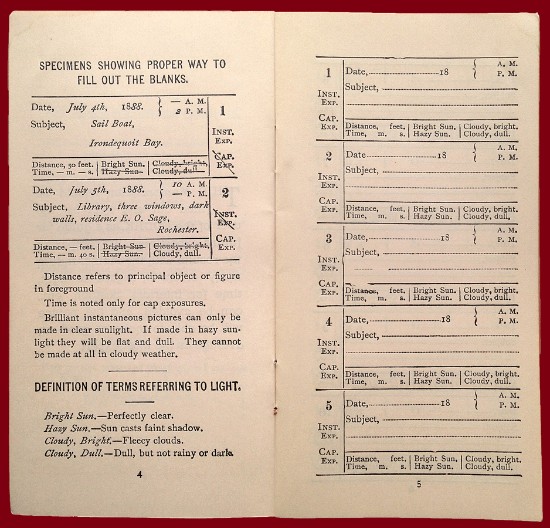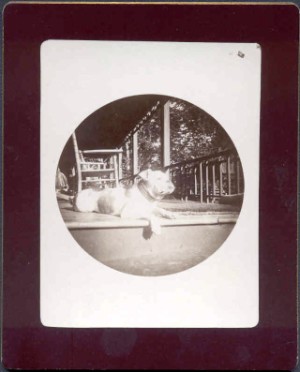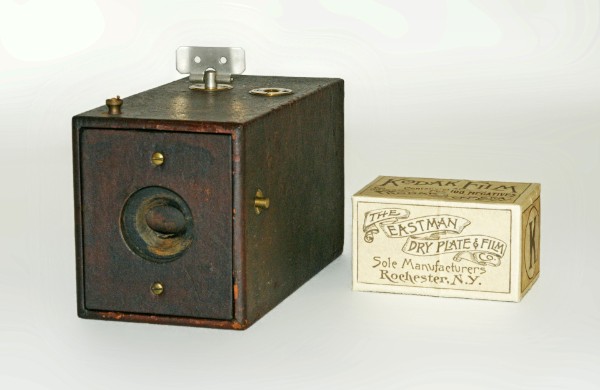Kodak of 1888
“You press the button, we do the rest.”
With this slogan George Eastman promoted during the early 1890's his revolutionary simple cameras for amateur photographers: the first series of Kodak boxcameras.
The very first Kodak came on the market in 1888. It was loaded with a film for 100 exposures and cost $ 25.
In the video you see an example of this first model.
Since the mid 1880’s George Eastman had tried to establish a system of photography based on flexible rollfilm:
- His company had developed a rollable, non breakable, lightweight film, that could be used in rollholders. These holders were attached to the back of plate cameras.
- He also introduced a film developing and printing service.
- He tried to manufacture a small and easy to use boxcamera, but this Eastman Cossitt Detective camera of 1886 was a commercial failure.
In 1888 Eastman constructed a new small and simple camera that was meant for amateur photographers who didn’t want to bother with chemicals and technical processes: the Kodak
The camera was a great success and many people, among them a lot of women, started taking photographs. When the 100 pictures of the film were shot, the photographer could mail the camera to Eastman Kodak, where all the technical work would be done by skilled people. The Kodak camera was loaded with a new film and returned to the owner. As soon as the 100 prints (of 2.5 inch diameter) were finished, these were also sent.
Reloading the camera and printing the photos cost $ 10. It wasn't really cheap, but the easy to use camera and the developing and printing service made photography attractive for many people.
The original Kodak of 1888 was modified in 1889 when the barrel shutter was replaced by a sector shutter. In October 1889 a larger model Kodak was introduced and named No. 2 Kodak. From that moment on the first model was called No. 1 Kodak. The original one is quite rare now and a priced collectors item.

The Kodak had no exposure counter, only a marker that indicated when enough film was wound for the next exposure. To keep track of the photos you had already taken, you could fill in a "Kodak Memorandum" booklet. These are very rare today, so I guess not many snapshooters took the trouble. | 
The Kodak produced a round picture of 2.5 inch diameter. The photos were often mounted on cards with a purple border and gold edges. The back is decorated with a floral design. |
Here is the English translation of an article about the original Kodak that I wrote in 2003 for the Dutch collectors society.
Download

Kodak of 1888 with replica of a box of 1888 film.

